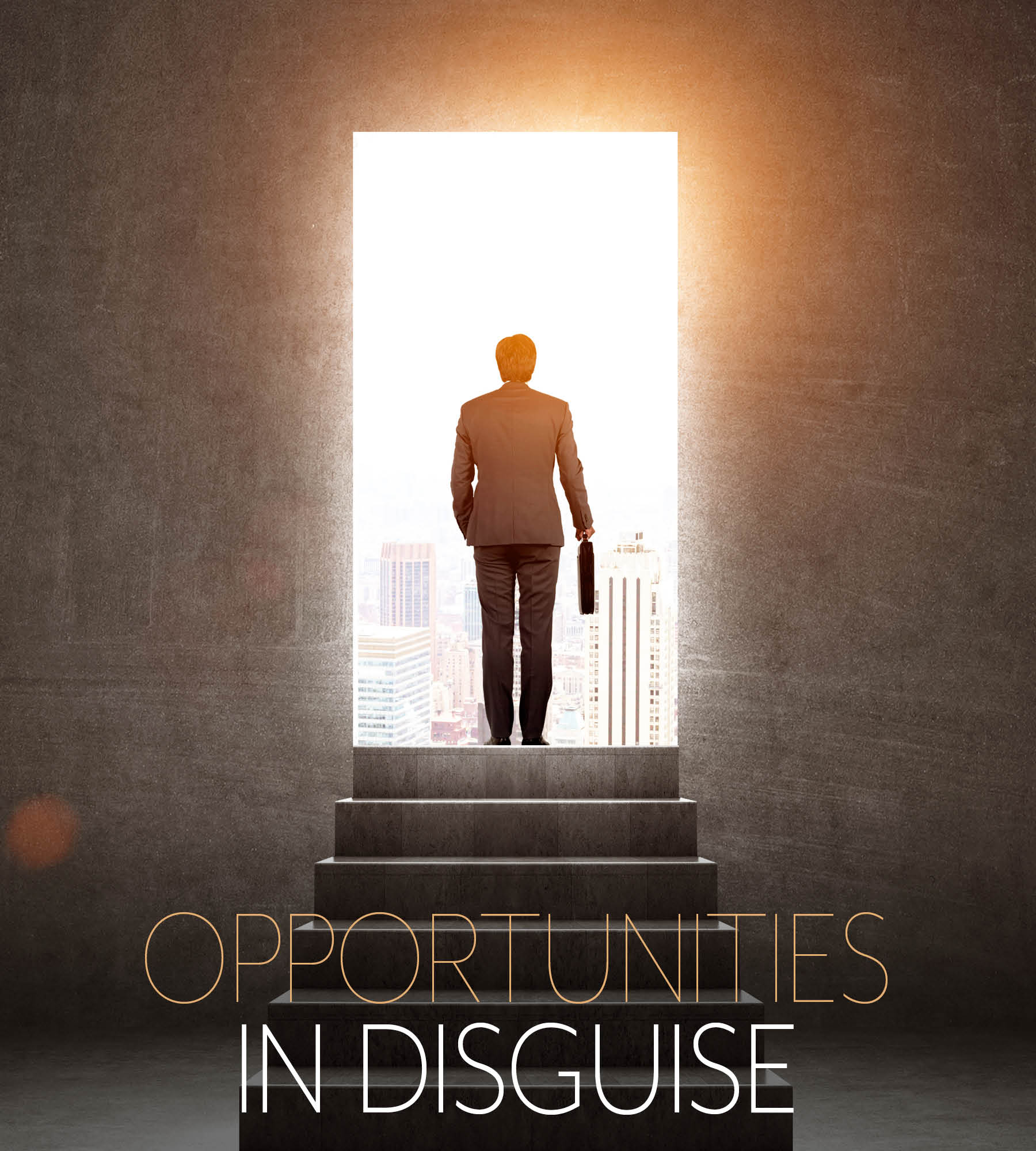Language
You can read the magazine in one of the following languages
An extraordinary 96 percent of global businesses have been impacted by some sort of crisis over the past two years, and three-quarters suffered serious disruption as a result.
Yet despite the growing number of existential risks, only one in five businesses have an adequate crisis management program in place.
The worrying findings are from a survey carried out by PwC. Ironically, shortly afterward, the consulting giant suffered a fairly significant crisis of its own, when its Australia operation was caught leaking government secrets to clients to help them reduce their tax bills.
Now that scrutiny is turning to its offices worldwide, it probably wishes it had followed its own advice and joined what it calls the ‘Resilience Revolution’.

As revolutions go, it’s pretty critical. The corporate world, still reeling from a myriad of well-documented recent calamities, is entering an even more dangerous period.
That’s certainly the view of the Institute for Crisis Management, whose grim 2022 report warns that not nearly enough is being done to prepare for the disasters about to strike.
“Organizations of all kinds should reconsider their approach to crisis planning and preparedness,” ICM President Deborah Hileman warned, echoing her clearly unheeded, near-identical warning from the previous year.
Her view is borne out by a survey of 150 Indian C-suite executives that found the biggest predictor of post-crisis recovery is comprehensive pre-crisis planning, including running simulations of all possible catastrophes.
You won’t know which particular one will punch you in the nose, but it’s all but inevitable that one of them will.
What’s not inevitable, however, is how you respond. The same tidal wave of pain can roll over two identical companies, condemning one to the bankruptcy courts and giving the other a new, unexpected lease on life.

The same tidal wave of pain can roll over two identical companies, condemning one to the bankruptcy courts and giving the other a new, unexpected lease on life.
For every Pan Am, Toys R Us, Blockbuster, Parmalat and Kodak, there are the likes of Apple, Nintendo, General Motors, Lego and Netflix, which are successful today as a direct result of the pivots they performed while mired in seemingly fatal trading conditions.
CEOs who follow their example and actively invest in experimentation often realize that the crisis-induced wake-up call is what will come to define them.
The call might be a salient reminder of why they exist in the first place.
Starbucks was seven months away from bankruptcy in 2007 because its core offering had been diluted – never a good thing for coffee – by merchandising, music and fancy sandwiches.
By improving its espressos and lattes, and – just as crucially – investing in team culture, it emerged stronger.
But teetering on the cliff edge can also mean you’re in the wrong business. When William Mills Wrigley launched Wrigley’s Scouring Soap in 1891, he struggled to break even, so as a last ditch attempt to stay afloat, he tried giving away a small amount of baking powder with each bar.
Soon, the baking powder was proving more popular than the soap, so he switched to just selling that.

But teetering on the cliff edge can also mean you’re in the wrong business.
After sales plateaued, he included two packets of chewing gum with each purchase and, happily for him, history repeated itself. When the mogul died in 1932, his empire was worth the equivalent today of approximately US$430 million.
The same thing happened with Avon Founder David H McConnell. He was a down-on-his-luck traveling book salesman who decided to offer free perfume samples to his female customers in a desperate attempt to woo more customers.
They loved the perfume more than the novels, and a future makeup behemoth was born.
Such crisis-fueled experimentation has become a leading source of organic growth, according to McKinsey, which predicted this year that external shocks and uncertainty are the new normal.
It found that companies that have actively prepared for a crisis so they can nimbly change tack have enjoyed a 43 percent shareholder return since 2017, compared with a 17 percent fall for those who didn’t bother.
But such riches only await if their new product or service is focused on competitive advantage rather than just saving money, and only if they can get it on shelves quickly.
Its survey revealed that 84 percent of new projects had been in what it calls ‘pilot purgatory’ – when a new idea stalls in its trial period – for a year, with a quarter mired for more than two years.
A crisis-induced pivot isn’t a step to take lightly as it risks alienating customers and plunging recklessly into a market with no experience, core competencies or credentials.
Such a move is only possible if a CEO has complete visibility over their organization, and can track progress on whatever new set of goals has been devised, according to Stephen Bowhill.
He has run a series of software and electrical companies across the Asia–Pacific region for 20 years, and advises business leaders on optimizing internal strategy.
“Most corporate disasters are unexpected, so reacting quickly and effectively is absolutely critical,” he tells The CEO Magazine.
“From my experience, when a crisis forces you to think differently and reassess the strategic focus, emerging stronger is only possible if the chief executive can monitor how each department is performing against very specific targets,” he says.
Bowhill recently launched Howwe in Australia, revolutionary software that lets them do precisely that.

“In an emergency, a leader must immediately realign the corporate goals and then track progress toward achieving them.”
- Stephen Bowhill
“In an emergency, a leader must immediately realign the corporate goals and then track progress toward achieving them,” he says. “The crisis may have been caused by an external factor, but it’s the internal dynamics of the senior team that’s the best predictor of a successful response.”
That was certainly front of mind for Risto Siilasmaa when he took over as Chair of Nokia in 2012 with the Finnish tech pioneer just weeks from bankruptcy, having lost 96 percent of its market share.
He pulled off one of the most celebrated forced experiments of all time by jettisoning the mobile phone business and betting the farm on telecommunications equipment instead, replacing nearly all his employees in the process.
The world could no longer fold its phones in half, but Siilasmaa’s crisis management strategy meant Nokia itself didn’t fold.
When he left in 2020, the company’s revenue was US$25 billion. Had it remained in the lucrative, but ultra-competitive phone sector, it would have become another in the growing list of high-profile companies that failed after becoming ‘too big to fail’.
Or, perhaps more accurately, failed after becoming too big to experiment.
As Rahm Emanuel, Chief of Staff for former President Barack Obama, once said, “You never want a serious crisis to go to waste. And what I mean by that is an opportunity to do things you think you could not do before.”

The COVID-19 pandemic threw up many examples of panic-induced creativity heralding unexpected success, but isn’t a useful template for crises that are yet to happen, according to Grant Chisnall, author of Boom or Bust – Survive and Thrive During Crisis.
“Everyone was affected at the same time, a case of many ships, one storm,” he tells The CEO Magazine. “Organizational crises are very different as the spotlight is firmly set on you and your response as a leader.”
Chisnall trains corporate executives in leveraging risk when misfortune necessitates trialing novel ideas, and he often encounters disturbing levels of intransigence.
“Many organizations use terms like ‘Black Swan Event’ or ‘unprecedented’ to describe crises, but every single one is foreseeable. You just don’t know when it will happen.”
